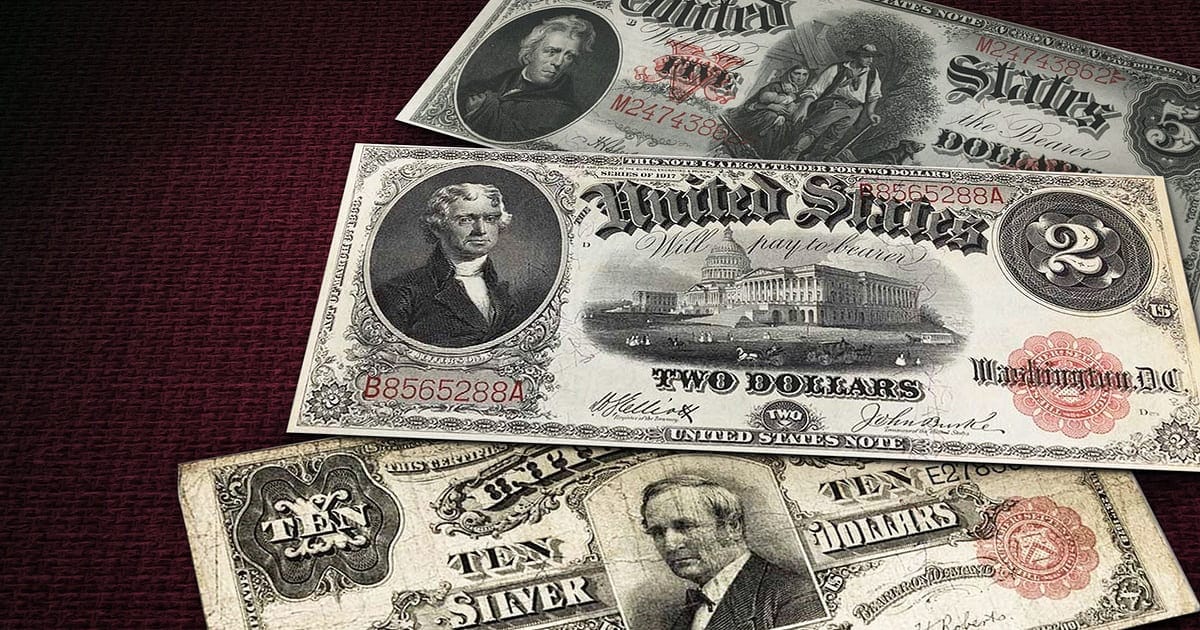
Learn About National Bank Notes and Three Charters
National Bank Notes are an important part of history because they were first issued in 1863 by what is commonly known as the first national banks in the United States. Under Abraham Lincoln’s presidency, a system of nationally chartered banks was created. Denominations of $1, $5, $10, $20, $50 and $100 were common, but on the rare occasion, $500 and $1,000 bills were also printed. The last notes were issued in 1935. Over 12,000 national banks issued money between 1863 and 1935.
National Bank Notes issued during this time acted as legal currency. The creation of national bank notes was an attempt to monetize the federal debt. Banks that had a charter with the federal government would deposit bonds in the United States Treasury. The banks in turn could issue notes for up to 90 percent of the bond values. During this time period, the federal government would back the value of the note.
There were three periods during which National Bank Notes were created:
- First charter bank notes (1863-1882)
These National Bank Notes were printed primarily in the North, as the South was recovering from war. - Second charter bank notes (1882-1901)
Most parts of the country were issuing National Bank Notes during this time period. - Third charter bank notes (1902-1929)
The third issuance is divided into three independent series: Red Seal Bank Notes, Blue Seal Bank Notes, and 1929 Small Size National Bank Notes. The 1929 Small Size Notes are the same size as our currency today.
HOW NATIONAL BANK NOTES WERE IDENTIFIED
In order to prevent forgery, a system was put in place to identify true notes. The identifying factors to determine authenticity are, bank notes with the bank’s name, town, and officer’s signatures featured on the face of the note. Forgery with paper currency in the period of National Bank Notes is as common as forging paper currency today. The money was printed at the Bureau of Engraving and Printing implementing special dyes and color schemes known only to the printer and the national bank.
Expand your collection today and shop our assortment of National Bank Notes, both large and small.




